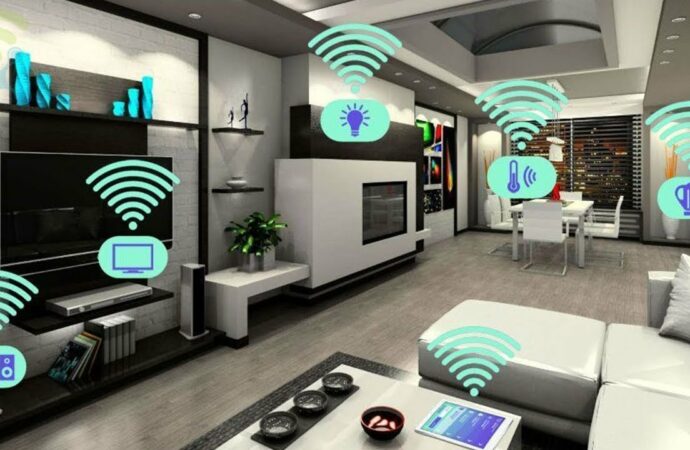Introduction Imagine a home where the lights automatically adjust to your preferred brightness, the thermostat regulates itself based on your comfort level, and your appliances respond to your voice commands. Welcome to the world of Smart Home Technology, a revolutionary concept that has transformed the way we interact with our living spaces. With the convergence
Introduction
Imagine a home where the lights automatically adjust to your preferred brightness, the thermostat regulates itself based on your comfort level, and your appliances respond to your voice commands. Welcome to the world of Smart Home Technology, a revolutionary concept that has transformed the way we interact with our living spaces. With the convergence of cutting-edge IoT (Internet of Things) devices and artificial intelligence, smart homes have become more than just a futuristic dream – they are a tangible reality, enhancing convenience, comfort, and energy efficiency for homeowners worldwide.
Understanding Smart Home Technology
Smart Home Technology refers to the integration of various internet-connected devices, appliances, and systems within a home that can be controlled remotely and autonomously. These devices communicate with each other through a central hub or network, offering homeowners an unprecedented level of control and automation. The key components of a smart home include:
- Smart Devices: These include smart speakers, smart thermostats, smart lighting, smart locks, smart cameras, and smart appliances, among others. Each of these devices is equipped with sensors and connectivity features that enable seamless communication and interaction.
- Internet of Things (IoT): Smart home devices are interconnected through the IoT, which allows them to collect and exchange data over the internet. This interconnectedness enables automation and remote control capabilities.
- Artificial Intelligence (AI): AI plays a critical role in smart homes, providing the ability to learn from user preferences and patterns. Machine learning algorithms enable smart home devices to adapt and optimize their functioning over time, making the home experience more personalized and efficient.
Benefits of Smart Home Technology
- Convenience: Smart home devices simplify everyday tasks by automating various processes. From turning on/off lights to adjusting thermostat settings, these devices eliminate the need for manual intervention, saving time and effort.
- Energy Efficiency: With smart home technology, homeowners can monitor and control energy usage more efficiently. Smart thermostats optimize heating and cooling, while smart lighting systems ensure lights are only on when needed, resulting in reduced energy consumption and lower utility bills.
- Enhanced Security: Smart home security systems offer peace of mind through features like remote monitoring, motion detection, and real-time alerts. Homeowners can keep a watchful eye on their property, even when they are away.
- Home Automation: Smart home technology allows for seamless integration of various devices and appliances, enabling complex automation scenarios. For example, you can set up a morning routine that turns on the coffee maker, adjusts the thermostat, and opens the blinds, all with a single command or at a specific time.
- Accessibility: Smart home features cater to the needs of differently-abled individuals, making it easier for them to interact with their homes through voice commands or mobile apps.
Challenges and Considerations
While smart home technology holds great promise, there are some challenges and considerations that need to be addressed:
- Interoperability: As the number of smart home devices grows, ensuring compatibility and seamless communication between different manufacturers’ products becomes crucial.
- Privacy and Security: The vast amount of data collected by smart home devices raises privacy concerns. It is essential for manufacturers to prioritize data security and user privacy by implementing robust encryption and authentication protocols.
- Connectivity Reliability: Smart homes rely heavily on internet connectivity. Poor connectivity or internet outages may hamper the functionality of smart devices.
- Cost: The initial investment in smart home technology can be significant. However, the potential energy savings and increased convenience over time may outweigh the upfront costs.
Conclusion
Smart Home Technology has evolved from a futuristic concept to an integral part of modern living. With its ability to enhance convenience, improve energy efficiency, and bolster security, smart homes are changing the way we interact with our living spaces. As technology continues to advance and become more accessible, the adoption of smart home devices is expected to grow, further transforming our homes into intelligent, interconnected havens that adapt to our needs and preferences effortlessly. Embracing the future of connected living through smart home technology is a step towards a more sustainable, efficient, and comfortable lifestyle for homeowners worldwide.


















